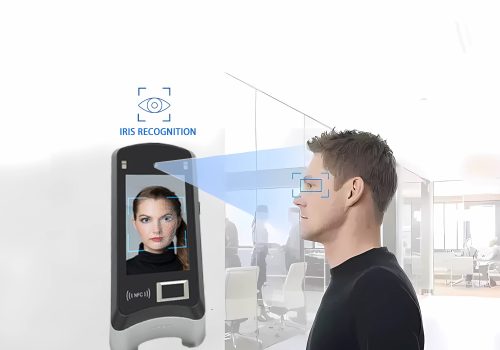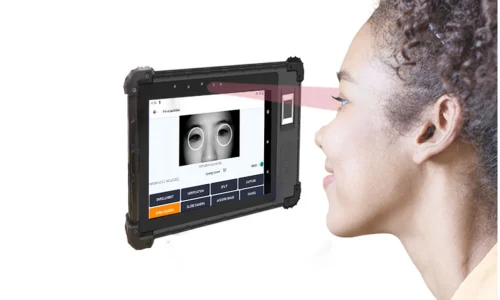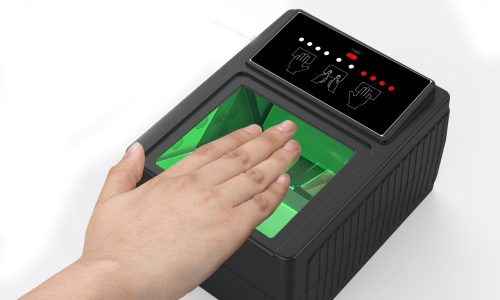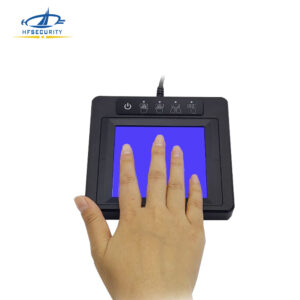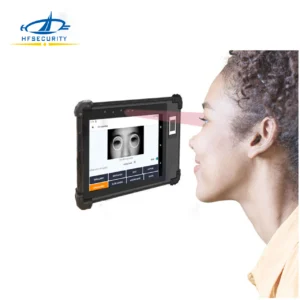Iris And Fingerprint Recognition
What Is Fingerprint Recognition?
Fingerprint recognition is a biometric method that identifies individuals based on the unique patterns of ridges and valleys on their fingertips. This method is one of the oldest and most widely used biometric technologies. Fingerprint scans are commonly found in smartphones, access control systems, and law enforcement databases due to their speed, affordability, and reliability.
Key benefits of fingerprint recognition
Quick and User-Friendly Scanning Process
Fingerprint recognition allows users to authenticate their identity in just a fraction of a second. With a simple touch or press of the finger, users can gain access without needing to remember passwords, carry cards, or enter PINs. The process is highly intuitive and convenient, making it especially suitable for high-traffic environments such as offices, schools, gyms, or secured entry points.
Low-Cost Hardware
Fingerprint recognition technology benefits from mature and affordable hardware. Compared to other biometric modalities such as iris or facial recognition, fingerprint scanners are more economical to manufacture, deploy, and maintain. This cost-efficiency makes fingerprint systems ideal for large-scale projects or budget-conscious organizations.
Compact Sensors Suitable for Small Devices
Modern fingerprint sensors are compact and lightweight, enabling seamless integration into a variety of devices — from smartphones and tablets to biometric tablets, door locks, and even time attendance terminals. Their small form factor allows for flexible placement and space-saving design, making them ideal for both fixed and mobile biometric solutions.
Compatible with Most Access Control Systems
Fingerprint modules are designed to easily integrate with most existing access control systems, whether through RS232/RS485, USB, Wiegand, or Bluetooth connections. They support connection with software platforms for real-time monitoring, attendance tracking, or secure identity management, offering great system versatility and adaptability across industries.
⚠️ Limitations of Fingerprint Recognition
Despite its advantages, fingerprint recognition does have some limitations that need to be acknowledged:
– Environmental and Physical Conditions Affect Accuracy
The accuracy of fingerprint scanners can significantly drop when a user’s finger is:
Wet or sweaty
Dirty or greasy
Injured, scarred, or excessively worn (common in manual labor workers)
Such conditions may lead to failed recognition attempts or higher false rejection rates, especially with optical fingerprint scanners.
What Is Iris Recognition?
Iris recognition is an advanced, contactless biometric identification technology that analyzes the unique patterns found in the colored ring-shaped part of the eye, known as the iris. Unlike the retina, which is located at the back of the eye, the iris is visible from the outside and can be scanned quickly and non-invasively using specialized cameras equipped with infrared illumination.
The iris contains intricate, random patterns of rings, furrows, freckles, and striations that are formed during fetal development and remain highly stable throughout a person’s lifetime. These complex structures are unique not only from person to person, but also between a person’s two eyes, making it possible to accurately distinguish individuals even among identical twins.
Advantages of iris recognition
Extremely High Accuracy
Iris recognition offers one of the highest accuracy rates among all biometric technologies. The iris contains more unique identifying characteristics than fingerprints or facial features, including intricate patterns of furrows, rings, freckles, and crypts that do not change over time. Because of this, iris scanners can achieve extremely low false acceptance rates (FAR)—often as low as 1 in 1.2 million or better. This makes iris recognition ideal for environments where identity verification must be near flawless, such as in government, military, or border control settings.
Difficult to Forge or Replicate
The iris is well protected behind the cornea, making it difficult to damage or alter without invasive procedures. Moreover, the randomness and complexity of the iris pattern make it nearly impossible to duplicate, even with high-resolution imaging. Unlike facial photos or fingerprint molds, a fake iris is not easy to produce, and modern systems include liveness detection to prevent spoofing using high-resolution images or videos. This gives iris recognition a clear edge in terms of security and resistance to fraud.
Contactless and Hygienic
Unlike fingerprint or palm-based biometric systems, iris recognition is completely contactless. The user only needs to look into a camera—there’s no need for any surface touching. This is especially beneficial in public environments or healthcare settings, where hygiene and cross-contamination are major concerns. The touch-free experience also reduces wear and tear on the device and provides a more comfortable and accessible option for users of all ages and abilities.
Ideal for High-Security Environments
Thanks to its accuracy, tamper-resistance, and data stability, iris recognition is frequently used in high-security environments such as:
Government agencies and embassies
Airports and immigration control
Military facilities and research labs
Banking and secure data centers
These systems are often integrated into multi-factor authentication platforms, further enhancing protection against unauthorized access.
Limitations of Iris Recognition
⚠️ Higher Cost of Implementation
One of the main drawbacks of iris recognition technology is the relatively high cost. Compared to more common biometric systems like fingerprint scanners or RFID cards, iris recognition devices are more expensive, due to the need for specialized cameras, infrared sensors, and advanced image processing algorithms. This can be a limiting factor for budget-conscious organizations or large-scale deployments.
⚠️ Requires Specialized Cameras
Standard cameras cannot accurately capture the detailed patterns of the iris. Instead, iris recognition systems rely on near-infrared (NIR) imaging to illuminate the iris and detect its complex structure without being affected by eye color. This requires dedicated hardware, which must be properly calibrated and maintained to function optimally.
⚠️ Sensitive to Lighting, Eyewear, and Positioning
Although modern iris scanners are designed to work in varied lighting conditions, they can still be affected by glare, reflections, or low-light environments. Users wearing glasses or colored contact lenses may experience recognition issues if the lenses obscure or distort the iris. Furthermore, the system may require the user to stand at a specific distance or angle for successful capture, which can slightly slow down the user experience or lead to repeated attempts if not positioned correctly.
How Do Iris Scan and Fingerprint Scan Compare?
To determine whether iris scan is better than fingerprint recognition, we can evaluate them across several categories:
| Feature | Iris Recognition | Fingerprint Recognition |
|---|---|---|
| Accuracy | Very high | High |
| Security | Difficult to spoof | Moderate spoof resistance |
| Contact Method | Contactless | Requires physical touch |
| Hygiene | More hygienic | More hygienic |
| Cost | Higher | Lower |
| Ease of Use | Slightly more complex | Easy and familiar |
| Speed | Slight delay in alignment | Fast scanning |
| Hardware Size | Requires camera | Compact sensor |
Which Biometric Technology Is Better?
Whether iris recognition or fingerprint recognition is better largely depends on the application scenario:
For high-security environments such as government buildings, airports, or data centers, iris scan technology offers superior accuracy and spoof protection.
For everyday commercial use, like office entry or mobile devices, fingerprint recognition remains a more affordable and convenient solution.
Moreover, modern systems are increasingly adopting multi-modal biometrics, combining both iris and fingerprint recognition to enhance security and flexibility.
Conclusion
So, is iris scan better than fingerprint? Technically, iris recognition offers greater accuracy and security, especially in environments where hygiene and spoof resistance are critical. However, fingerprint recognition remains the most practical, cost-effective, and widely used biometric method in daily life.
Choosing the right biometric technology depends on your specific security needs, budget, and user environment. In some cases, combining both may offer the best balance of security and convenience.
Related products
Contact Us
We would love to speak with you.
Feel free to reach out using the below details.


